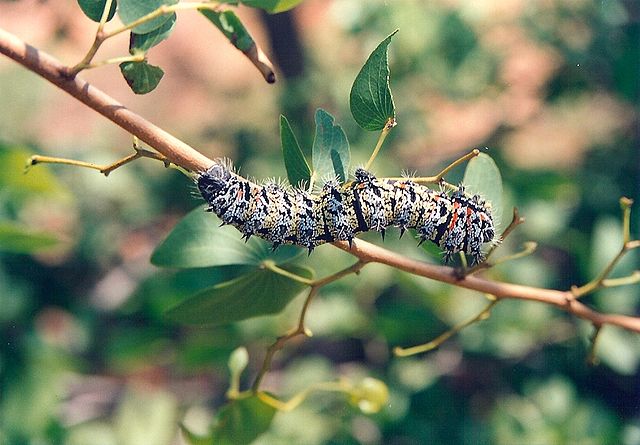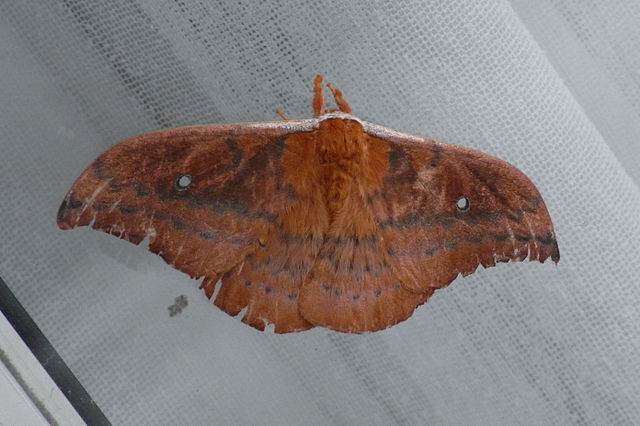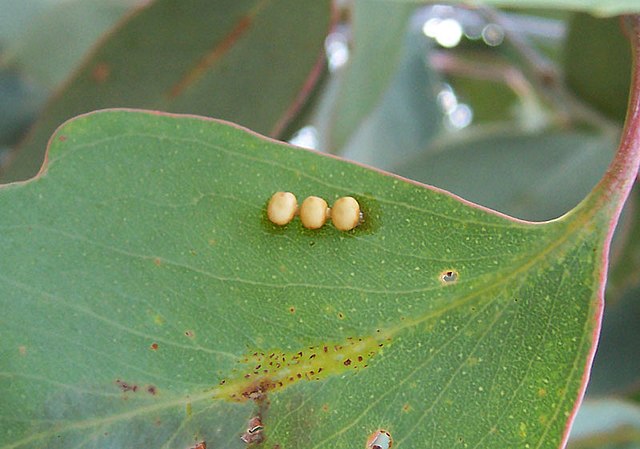The Saturniinae or saturniines are a subfamily of the family Saturniidae, also known as giant silkmoths. They are commonly known as emperor moths or wild silk moths. They are easily spotted by the eyespots on the upper surface of their wings. Some exhibit realistic eye-like markings, whilst others have adapted the eyespots to form crescent moon or angular shapes or have lost their wing scales to create transparent windows. They are medium to very large moths, with adult wingspans ranging from 7.5 to 15 cm, in some cases even more. They consist of some of the largest sized Lepidoptera, such as the luna moth, atlas moth, and many more. The Saturniinae is an important source of wild silk and human food in many different cultures.
Saturniinae
Callosamia angulifera caterpillar (Attacini)
A "mopane worm", the edible caterpillar of Gonimbrasia belina (Bunaeini)
Syntherata janetta of the Saturniini
Saturniidae, members of which are commonly named the saturniids, is a family of Lepidoptera with an estimated 2,300 described species. The family contains some of the largest species of moths in the world. Notable members include the emperor moths, royal moths, and giant silk moths.
Saturniidae
Marbled emperor moth (Heniocha dyops) in Botswana
Life stages of giant emperor moth (Saturnia pyri)
Clutch of emperor gum moth (Opodiphthera eucalypti) eggs








